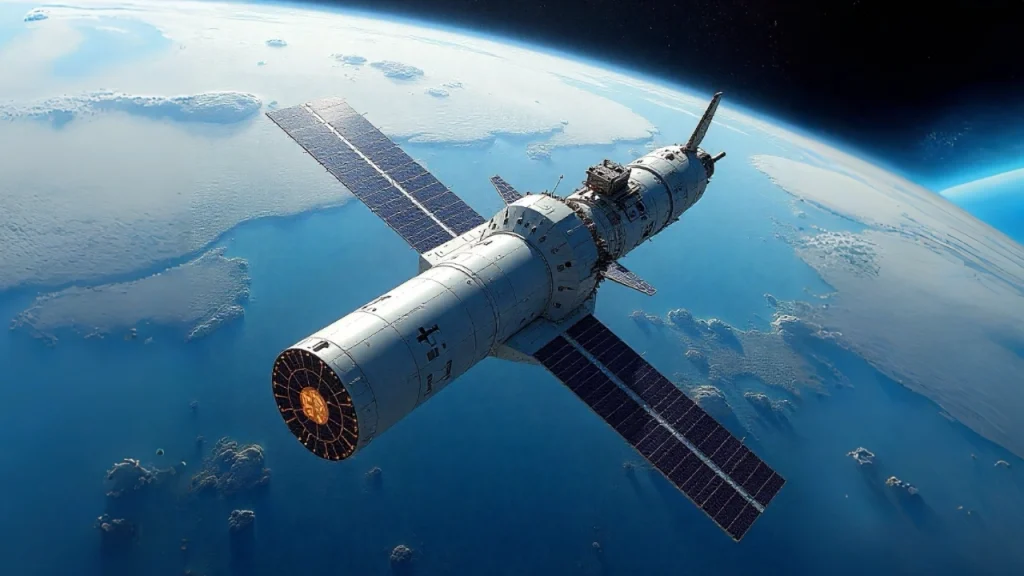- Jeff Bezos says space solar farms could power AI data centres within 20 years.
- The concept aims to cut Earth’s energy strain and boost sustainability.
What happened: Bezos unveils orbital data centre vision
At Italian Tech Week in Turin, Jeff Bezos outlined a plan to build data centres powered by solar energy collected in space. He predicted that within the next 10 to 20 years, orbit-based solar farms could supply uninterrupted power to AI infrastructure. The idea, he said, addresses the limits of terrestrial solar energy—blocked sunlight, variable weather, and limited land availability.Bezos explained that space offers a consistent, cloud-free environment where solar arrays can generate continuous energy, supporting massive data-processing systems without relying on unstable grids. He argued that this could become essential as global AI workloads rise and data centres consume more of the world’s electricity supply.While acknowledging challenges such as launch costs and system maintenance, Bezos suggested that reusable rockets and declining orbital costs could make space computing viable sooner than expected. The initiative aligns with broader efforts to decarbonise technology infrastructure through innovation and clean energy.
Also read:Jeff Bezos and Andy Jassy at AWS: Revolutionising cloud computing
Also read:Jeff Bezos to sell 50 million Amazon shares next year
Why it’s important
Bezos’s proposal reframes the debate around how to sustain AI’s exponential growth without exhausting Earth’s energy systems. Traditional data centres rely heavily on fossil-fuelled grids and water-intensive cooling, creating both cost and environmental pressures. Space-based solar facilities, by contrast, could deliver constant renewable power and eliminate weather dependency.This forward-looking idea also highlights how private technology leaders are driving energy innovation beyond national borders. The concept of orbital data centres builds on ongoing research by agencies such as NASA and the European Space Agency into wireless power transmission from orbit. If realised, it could reduce land use, carbon emissions and infrastructure stress—an appealing prospect for a digital economy growing faster than its energy base.
Critics note that high costs, radiation exposure and long-term maintenance remain formidable barriers. Yet supporters argue that such ambitions spur breakthroughs in space logistics, sustainable energy storage and global communication design. Overall, Bezos’s plan represents optimism in solving digital expansion through engineering rather than limitation—a stance that, while daring, mirrors the trajectory of technological history.

